Today I set out for a new journey, trying to find out about one of my favorite districts and her heritage … #Hoogly … in the next 48 hours, see some amazing places, eat food and witness some heritage Durga Puja. So, keep your eyes here for an amazing journey for an insight into Bengal for the next 48 hrs.
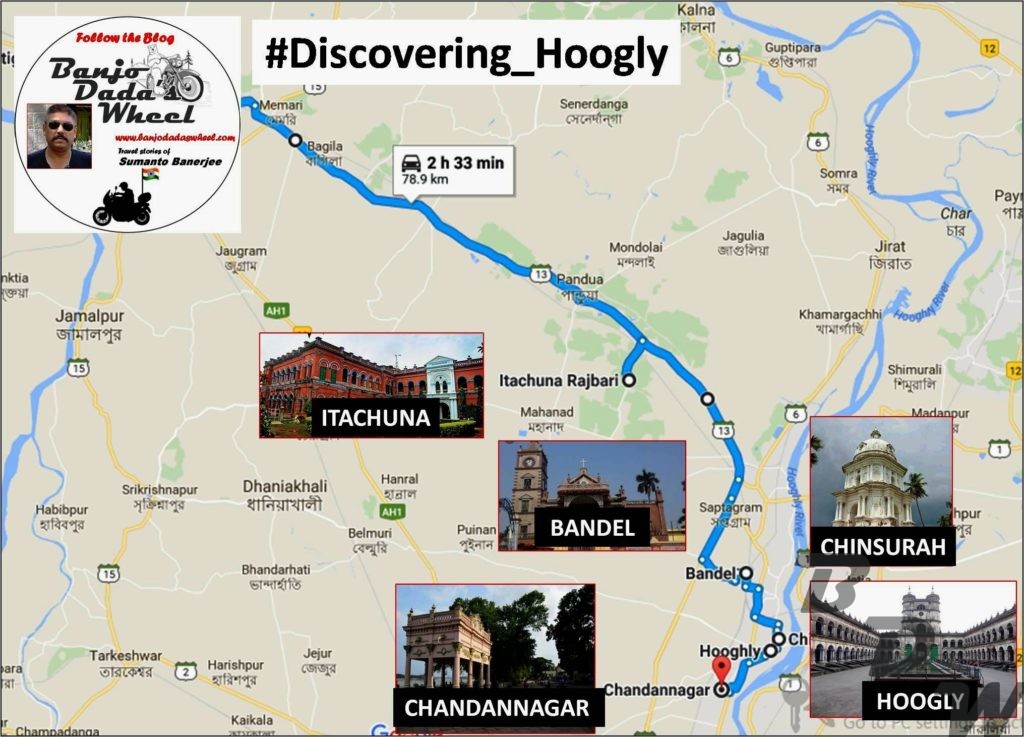
At #Shaktigarh …
Managed to get out inspite of massive thunderstorm and rain. And how can Dada’s Motorcycle sojourn start without a tea break to have #Prosenjit_prosongshito lyangcha and tea.
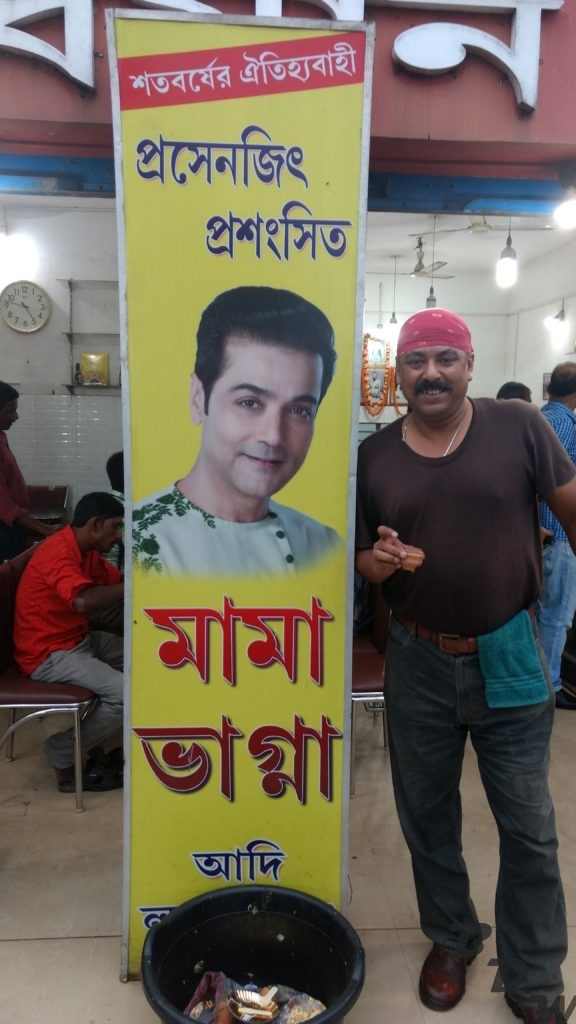
At the #ITACHUNA_RAJBARI.
The Itachuna Rajbari, is also famously known by its other name #Bargee_Danga, the term having been derived from Bargee, a name given by the Bengali’s to the Maratha tax collector warriors under #Bhaskar_Pandit and #Raghuji_Bhosle from 1742-1752 who repeatedly attacked Bengal to collect #Chauth, which was 1/4th of the tax that was to be paid by the Nawab of Bengal( Sub-e-dar), Bihar and Orissa. Though the Maratha warriors stopped their attacks after the assassination of Mir Habib, they gained control over Orrisa. As a result many Maratha Bargee’s stayed back in Bengal. They amassed a lot of wealth. One of such Maratha warriors were the Kundans, now known as Kundu’s also settled here.
The Itachuna Rajbari was built by the ancestors of Shri Safallya Narayan Kundu in 1766. The Govt.of India’s policy of abolishing the Raj-culture hindered further flourishes of the Rajbari. It is the present inheritors of the family Shri. Rabindra Narayan, Shri. Dhruva Narayan and Shri. Basav Narayan Kundu along with Mylestones & Journeys, have decided to restore the glory and are making all efforts to maintain the royal heritage through regular upkeep. The Heritage Homestay is one such initiative through which village tourism may be promoted in this area.
The 250-year-old Itachuna Rajbari in Hooghly district, is also known to be among Bengal’s most haunted houses. A few guests have reported feeling extremely cold in the night and seen a saree clad woman with burning eyes. Thieves who have broken in had reported seeing headless torsos dancing in the naachghar. Owners of the Rajbari admit to having heard such stories but never encountered such an incident. Residents of the village claim to have seen and heard a lot but to what extent it is true, no one knows.
The Itachuna Rajbari has been the location for shooting for the famous Bollywood movie #LOOTERA. Varun (Ranveer Singh) gets into the house and heart of Pakhi (Sonakshi Sinha) on the pretext of being an archaeologist. Unfortunately he leaves just after love blossoms between the two. They meet a year later under extraordinary circumstances where love and hate both surface to showcase more filmi drama.
This being a Homestay now, needs to be booked well in advance. Vagabonds like me couldn’t get a bed here, so had to be satisfied seeing it from outside only, though allowed to roam around freely, but couldn’t go to the rooms. It was a mixed emotion because of the following reasons:-
1. Polite managers and ill behaved Bengali Chowkidars (I didn’t want to scare them, so let them be)
2. Snobbish houseguests; could never understand why Bengalis can’t smile at strangers.
Well … The Rajbaari is great … But I have seen better …
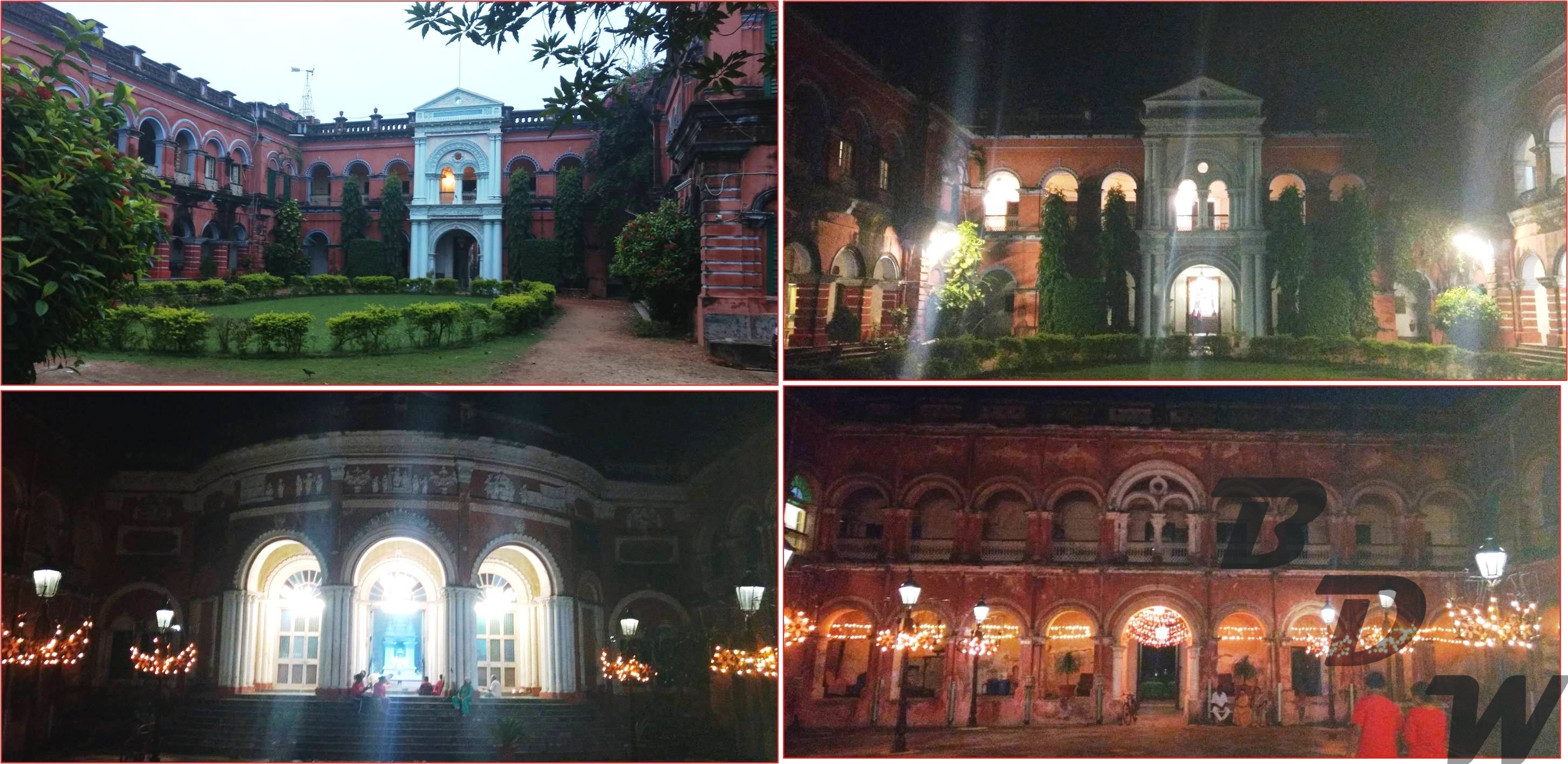
At #PANDOOAH, Khanyan, checked in to an AC room at the #Din_Raat Dhaba /Bar/Hotel / Deshi-Bilayeti Theka …
History of Pandooah is also pretty myriad. Legend says that Panduraja, considered as a direct descendent of Goutam Buddha, was a powerful ruler in a Hindu dominated kingdom, which housed only five Muslim families. One of these Muslims sacrificed a cow on the occasion of his son’s birthday. Panduraja and his Hindu subjects were furious and they in return killed the boy. The Muslim father was left with no option but to carry his son’s body to the court of Feroze Shah in Delhi. Feroze Shah in order to crush Panduraja, sent a huge army, led by his nephew Shah Suffi towards Bengal. Although Panduraja was a ruler of a small province and maintained a small army he was able to defend the huge army from Delhi at least for the initial stages.
Soon a rumour spread in the Delhi camp that the palace of Panduraja contained a mysterious pond, which water had a strange power of bringing dead men back to life. Strategies were chalked at the Delhi army camp and they bribed a man of Panduraja’s army to contaminate the water of the pond by throwing a piece of beef into it. The plan was tactfully carried out and the water lost its magical power and it was only a matter of time that Panduraja was crushed. Left with no option Panduraja and his family committed suicide by drowning in the Ganges at Tribeni.
Shah Suffi went on to construct a tower as a symbol of triumph over his Hindu counterpart, which later on served as the Ajan Minar for the Bais Darwaza Masjid also called the Bari Masjid (Big Mosque). But a handful of historian differ over this issue and they believe that the minar was actually the highest part of the Bishnu Mandir of Panduraja, which was demolished by the Muslim invaders leaving only the tower as a symbol of triumph.
While the historians debate over finer issue you can well explore the two unique pieces of Bengal architecture (I had seen both and posted about them in great details before). I rise above Hindu-Muslim debate, with #Old_Monk, fried fish, chilli fried baby corn, butter naan, chicken bhartaa ( what a pity, beef not available) …. Booked into a room, but haven’t seen it yet.
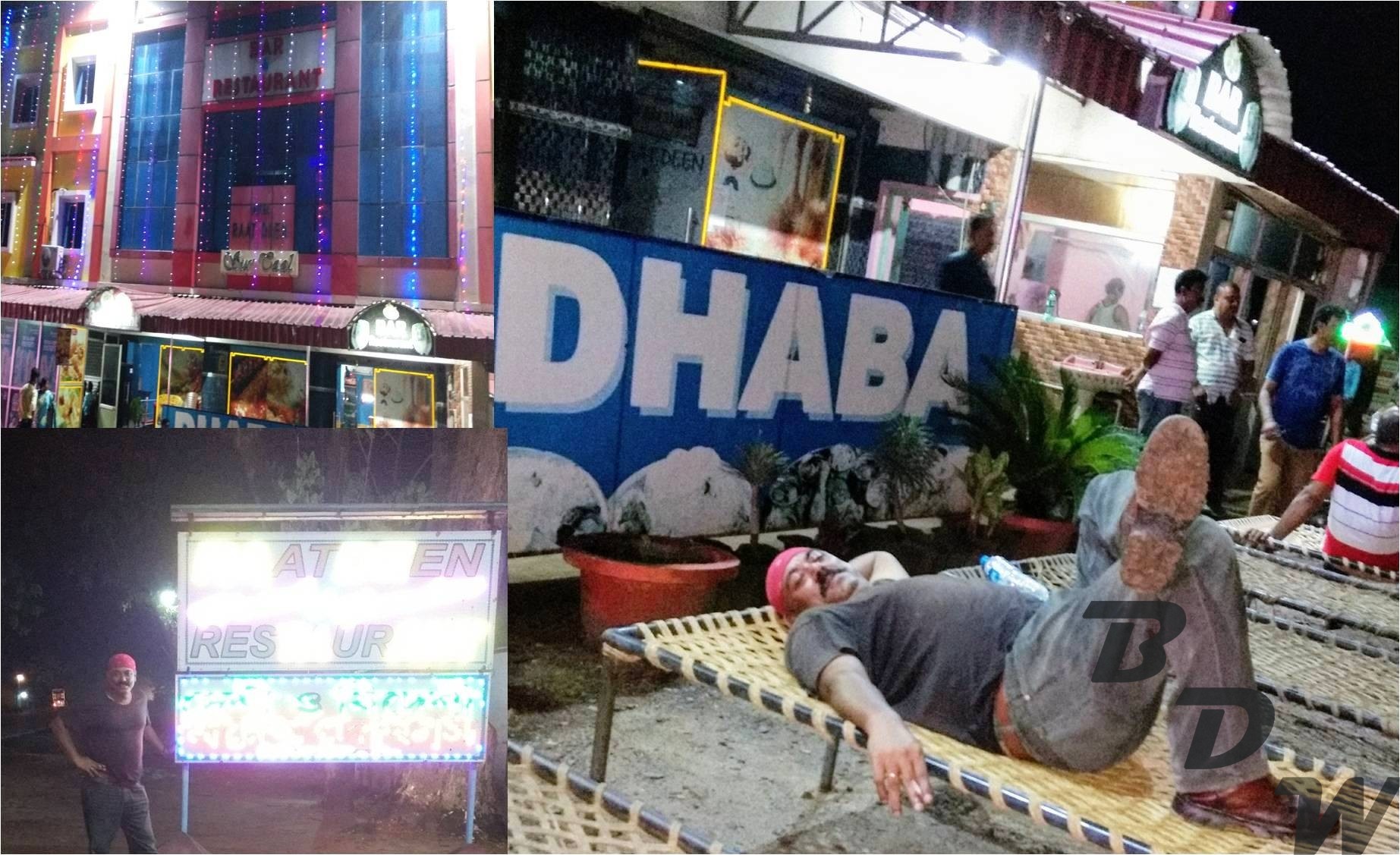
At #SUSANNA_ANNA_MARIA MAUSOLEUM, Taldanga, Chinsurah.
Susanna Anna Maria Verkerk was a Dutch Lady of 18th century Chinsurah. Her first husband was Pieter Brueys, a prominent merchant and a director of Dutch Administration. They had three children. Two daughters – Susanna Jacoba and Maria Anna de Brueys and a son – Louis Adrian de Brueys. After the death of Pieter Brueys in 1783, Susanna Anna Maria Brueys got married again, to Thomas Yeats, a well-established Englishman of Colonial Bengal.
In 1805, four years before her death, she made a will giving all her possessions to her son Louis Adrian. Being married to two such affluent man, she inherited vast properties which include two houses – one beside the river, adjacent to Dutch Factory building and another at Taldanga, present day G T Road with sixty bighas of land attached with it called Ayesh Baag. Through her will she bequeathed Rs.4000 as a trust, the interest of which was to be applied to repair her own tomb and that of her two husbands. She died in 1809 and was buried in Ayesh Baag. Later on, under British rule, the property along with the land was sold in 1833, leaving only her tomb as the solitary structure.
Built in 1809, the octagonal structure is an ideal example of Indo-Dutch architecture. The two storied memorial with arched gateways and slender columns is topped by a dome. There is no epitaph in the tomb but the drum of the dome contains an inscription which read as: “SUSANNA ANNA MARIA YEATS REBOORE VERKERK OBiIT 12 MAY ANNO 1809”. Here ‘Reboore Verkerk’ means her title was Verkerk by birth. The tomb is locally famous as ‘Saat Saheber Bibir Kobor’ (Grave of the Wife of Seven Europeans) or ‘Memsaheber Kobor’ (Grave of European Lady) though the official records only vouch for her two husbands.
Probably this lore had inspired Ruskin Bond to write a 5 page story which was adopted by the film director Vishal Bhardwaj in 2007 and developed into a Bollywood film – ‘7 Khoon Maaf’ (Seven Sins Forgiven), starring Priyanka Chopra as Susanna. On the request of Bhardwaj, Bond wrote a 80 page novella based on the short story and Vishal Bhardwaj made a screenplay out of it, co-written with Matthew Robins from Hollywood. The screenplay along with the novel and the original short story were later published as a full fledged book by Penguin India.
Today I am joined by the beautiful #Bikerni @Sanghamitra Mitra who kindly consented to be my local guide for Hoogly. She is just 6 years elder to my daughter, so can’t call her Biker-Sister, so she is my #Biker_Bhaijhi (niece).
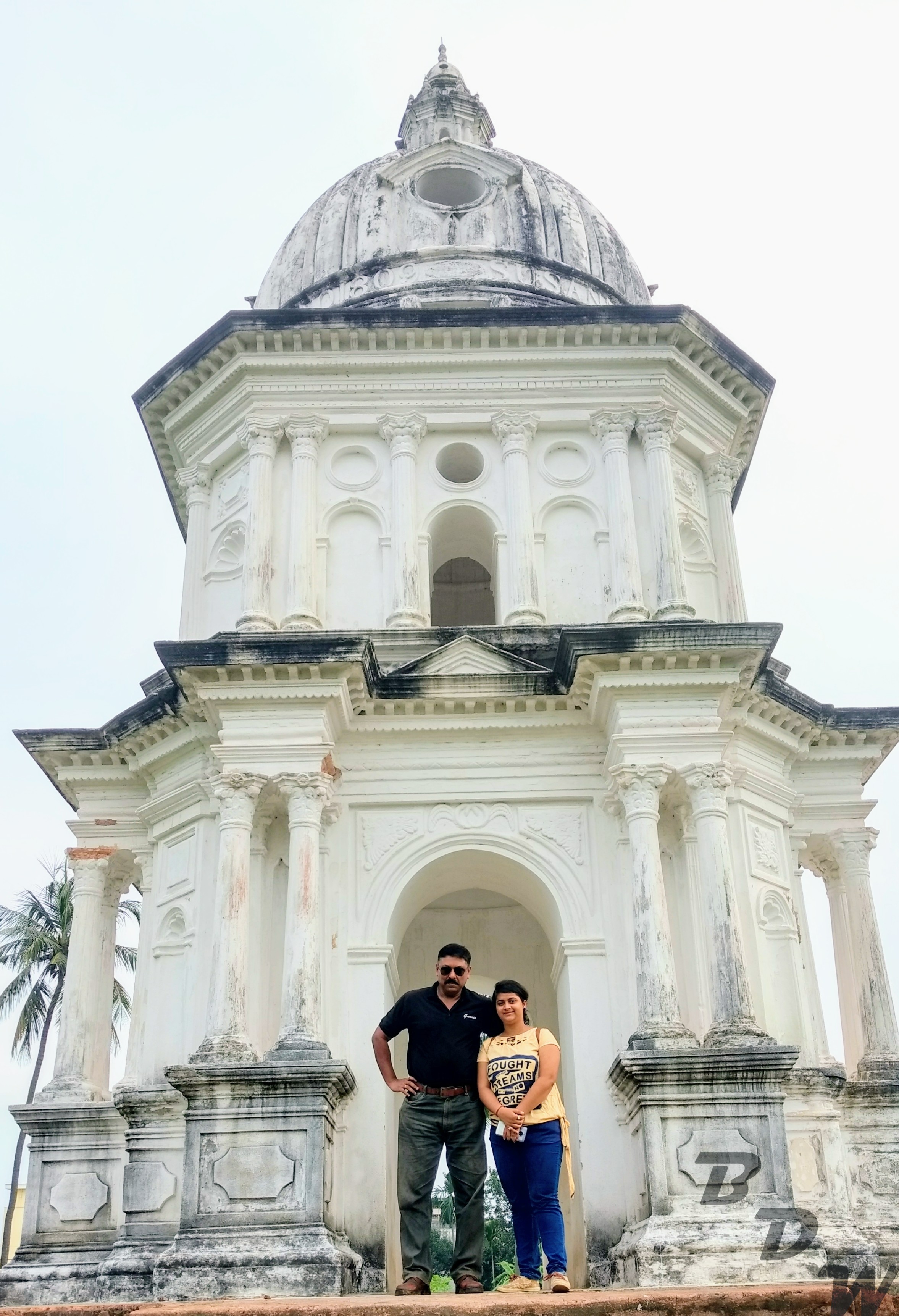
At #CHANDANNAGAR_STRAND
The name Chandannagar is possibly derived from the shape of the bank of the river Hooghly which is bent like a half moon (in Bengali, Chand means moon and Nagar implies city). In some old documents the spelling of Chandannagar was Chander-nagore which probably came from Chandra Nagar. One more reason behind the name is, in Chandernagore there is a temple of Goddess ‘Chandi’. So it might come from there. But earlier people knew the place by the name Farasdangaor “France donmgi” as it was a French colony (Bengali: Farasi means French, danga means land).The name Farasdanga appears in Bengali literature.
Chandannagar was established as a French colony in 1673, when the French obtained permission from Ibrahim Khan, the Nawab of Bengal, to establish a trading post on the right bank of the Hughli River. Bengal was then a province of the Mughal Empire. It became a permanent French settlement in 1688, and in 1730 Joseph François Dupleix was appointed governor of the city. In 1756 war broke out between France and Great Britain, and Colonel Robert Clive of the British East India Company and Admiral Charles Watson of the British Navy bombarded and captured Chandannagar on 23 March 1757. The town’s fortifications and many houses were demolished thereafter, and Chandannagar’s importance as a commercial center was eclipsed by that of Calcutta situated down river. Chandernagore was restored to the French in 1763, but retaken by the British in 1794 in the Napoleonic Wars. The city was returned to France in 1816. It was governed as part of French India until 1850, under the political control of the governor-general in Pondicherry. By 1900 the town’s former commercial importance was gone, and it was little more than a quiet suburb of Calcutta, with a population of 25,000 (1901).
In June 1948 the French Government held a plebiscite which found that 97% of Chandannagar’s residents wished to become part of India. In May 1950, the French allowed the Indian government to assume de facto control over Chandannagar, officially ceding the city to India on 2 February 1951. De jure transfer took place on 9 June 1952. On 2 October 1954 Chandannagar was integrated with the state of West Bengal.
Chandannagar nevertheless was noted for its clean wide thoroughfares, with many elegant residences and exquisite French colonial architecture along the riverbank, known as the Strand Road. The tree-shaded promenade along the river is about 1 km in length and 7 meters in width, and there are many buildings of historical importance along the way. It is a popular spot for local people and tourists alike, who love to stroll along enjoying the breeze and watching the small boats sail by. Along the Strand one can find the Vivekananda Mandir (a meditation centre protruding into the river Ganges).
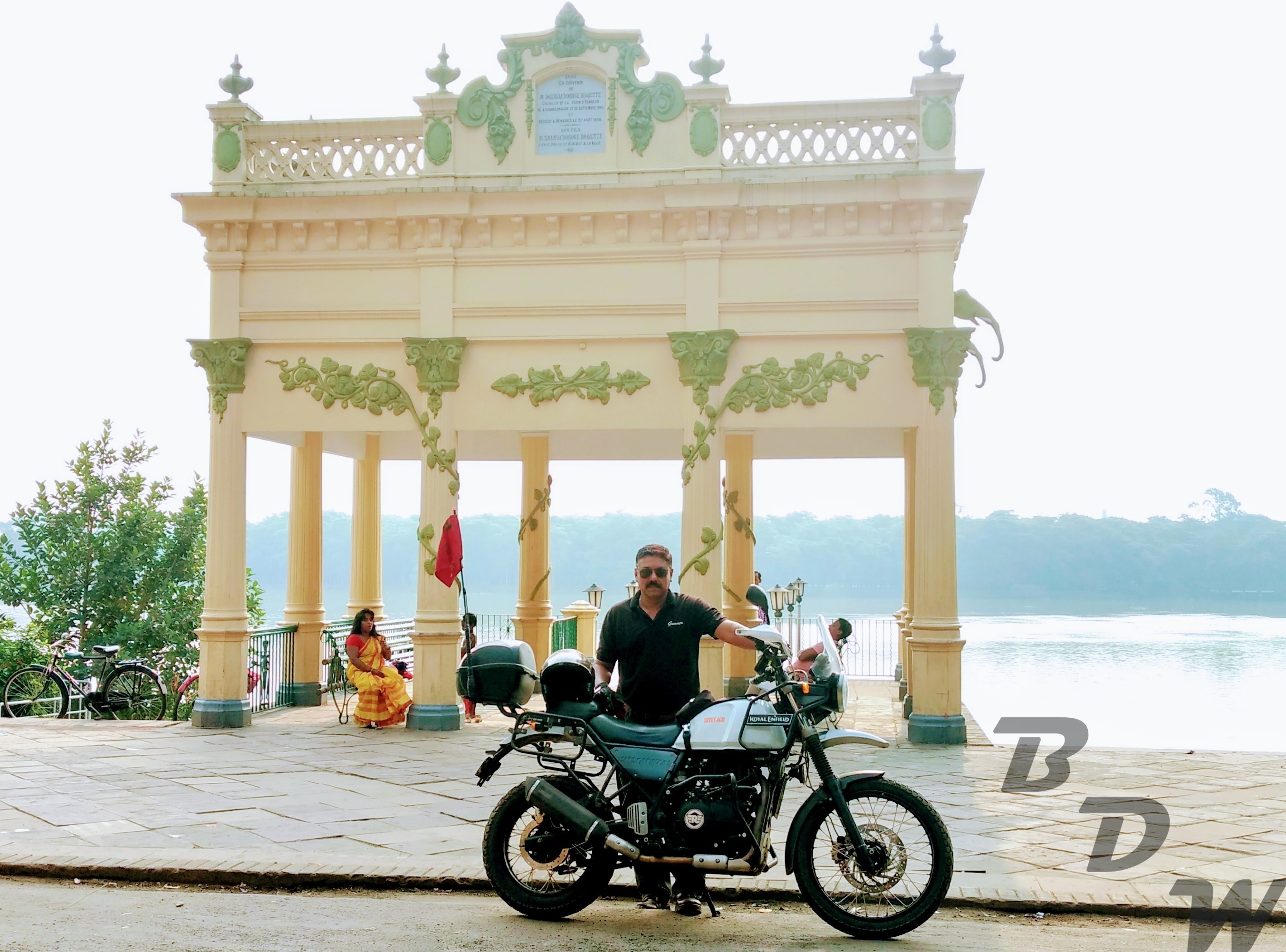
At the #SACRED_HEART CHURCH (I’Eglise du Sacré Cœur) Chandannagar.
The church is situated near the Strand. It was designed by French Architect Jacques Duchatz. The church was inaugurated by Paul Goethals 27 Jan. 1884.The church stands for over two centuries to mark the beauty of the architecture during the French period — a good place to visit for the historians and tourists alike. The remains of the Church of St. Louis is also an attractive tourist spot.
Here self and Sanghamitra Mitra is joined by another young Traveller Arijit Seal … Both will take me further ….
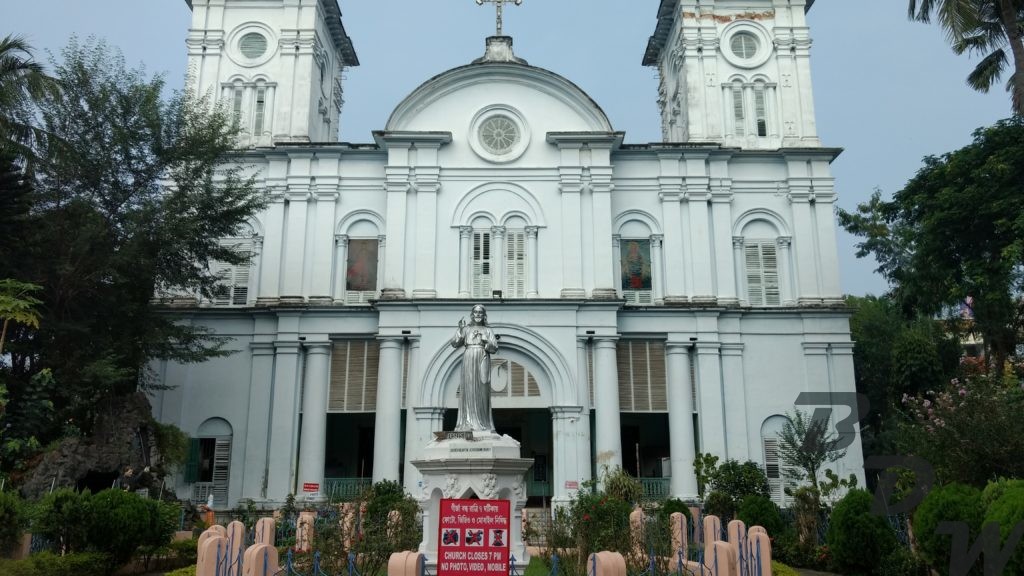
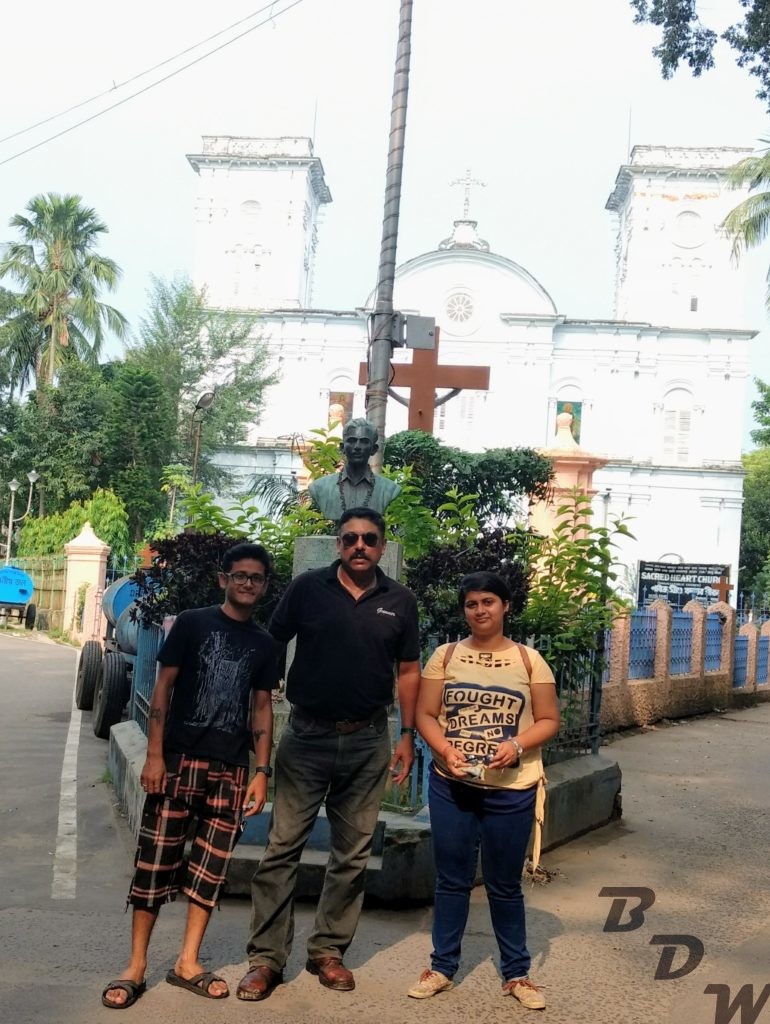
At #PATAL_BARI Chandannagar (underground house)
A very unique and yet equally beautiful offering by Chandan Nagar, the Patal Bari literally means the underground house, blessed by the presence of Kobiguru Robindranath Tagore and Sri Iswarchandra Vidyasagar mohashoy.
The most amazing feature of the house is that its lowest floor is submerged in the Ganges, almost down to the riverbed, making it a one of its kind monument in Chandan Nagar. The house was owned by the zemindars of nearby Bansberia.
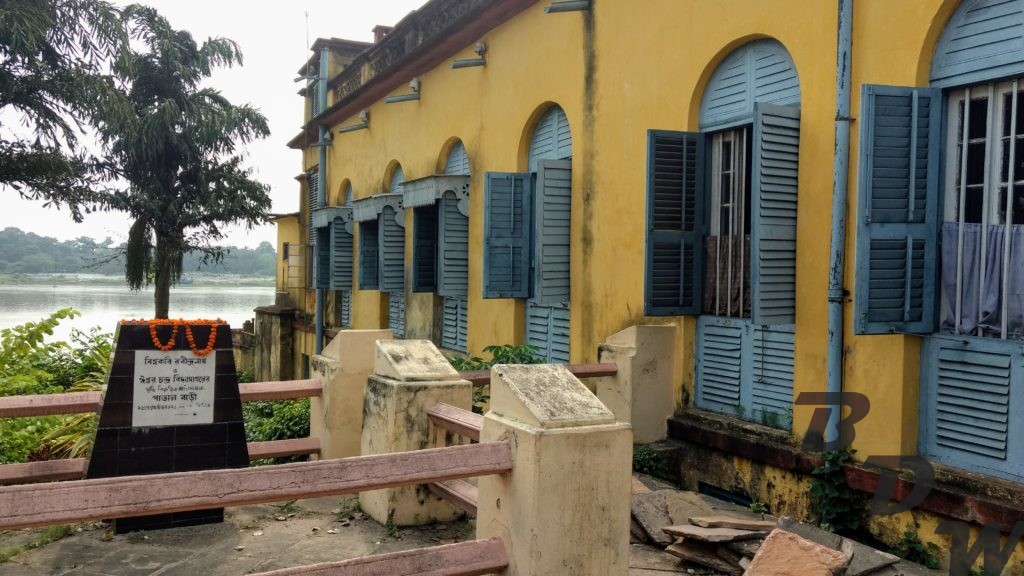
At the #Anthony_Firingi_House aka #Gopal_dham Durgapuja …
Born Hensman Anthony, the sobriquet Firingee (The foreigner of European origin) was used colloquially as a reference to his Portuguese origins. Although not much is known of his early life, Anthony arrived in Bengal sometime in early 19th century and subsequently came to settle in Farashdanga, in the town of Chandannagar in West Bengal.
He married a Hindu Brahmin widow named Saudamini and was deeply influenced by Bengali culture and language, as well as the Hindu religion. Eventually, Anthony came to learn the language and composed a number of noted religious songs in devotion to the Goddesses Kali and Durga. He is noted for his Agamani Songs, celebrating the return of Goddess Durga to her parents home that marks the Bengali Autumn festival of Durga Puja. Anthony is also noted for his literary face-offs in Kavigans, or Bard’s duels, with a number of noted Bengali composers including Bhola Moira, Ram Basu and Thakur Singha. Anthony also helped construct a temple to Goddess Kali in the Bowbazar locality of North Calcutta known as ‘Firinghi Kalibari’. His wife Saudamini was burnt to death, for being a widow and re-marrying Anthony, who was a foreigner.
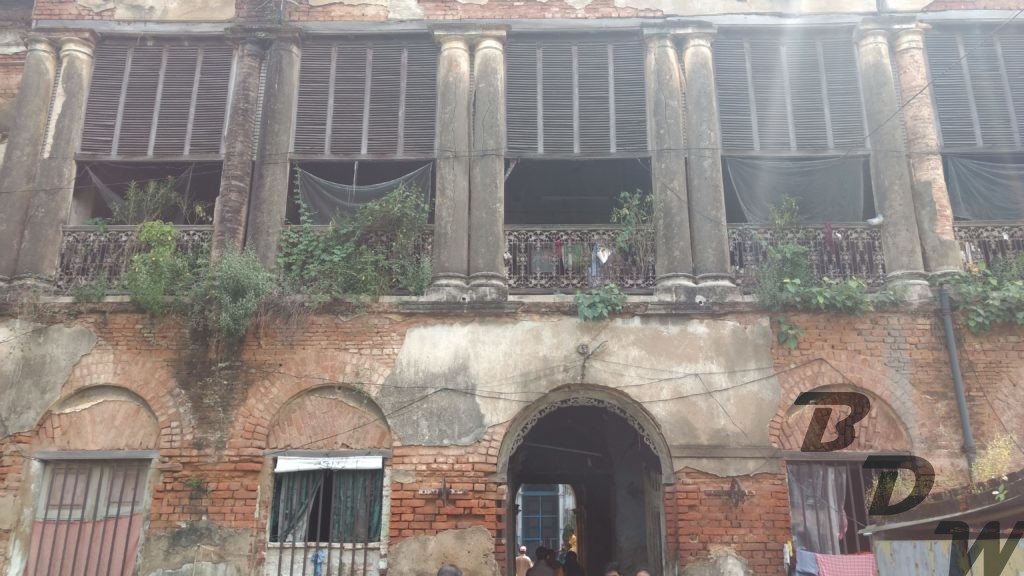
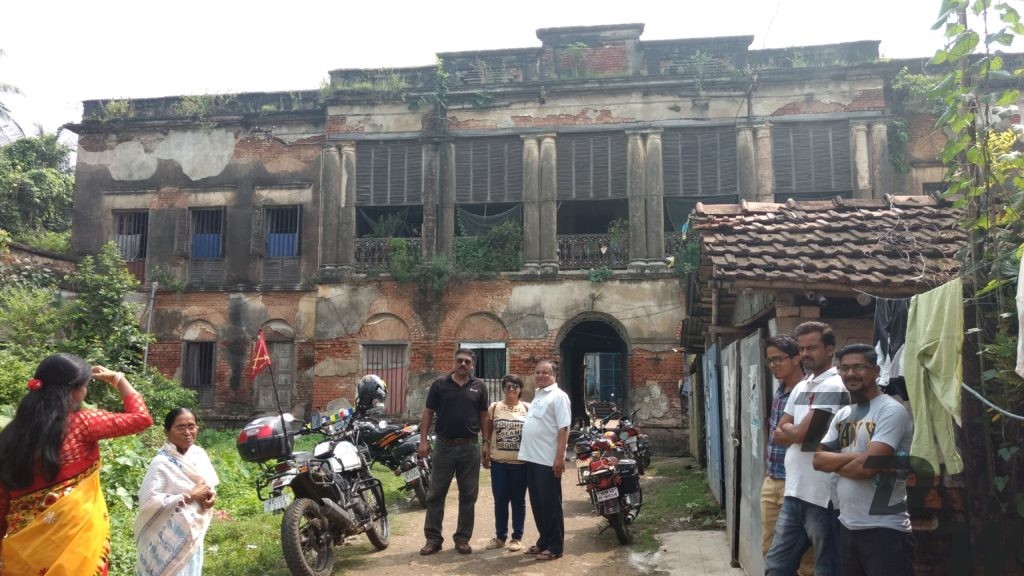
At the #INSTITUT_DE_CHANDERNAGOR (Chandannagar Museum)
One of the oldest museums of the region. It boasts a collection of French antiques such as cannons used in Anglo-French war, wooden furniture of the 18th century, etc, which are difficult to find anywhere else in the world. The institute still teaches French through regular classes. Personal items of Jogendra Nath Sen, resident of Chandannagar who died in France fighting in the World War I, were sent to his brother in India who later donated them to the Institut de Chandernagore in Chandannagar.
Here we are joined by Supratim Dhali from the #L2R bike touring club for the rest of the trip.
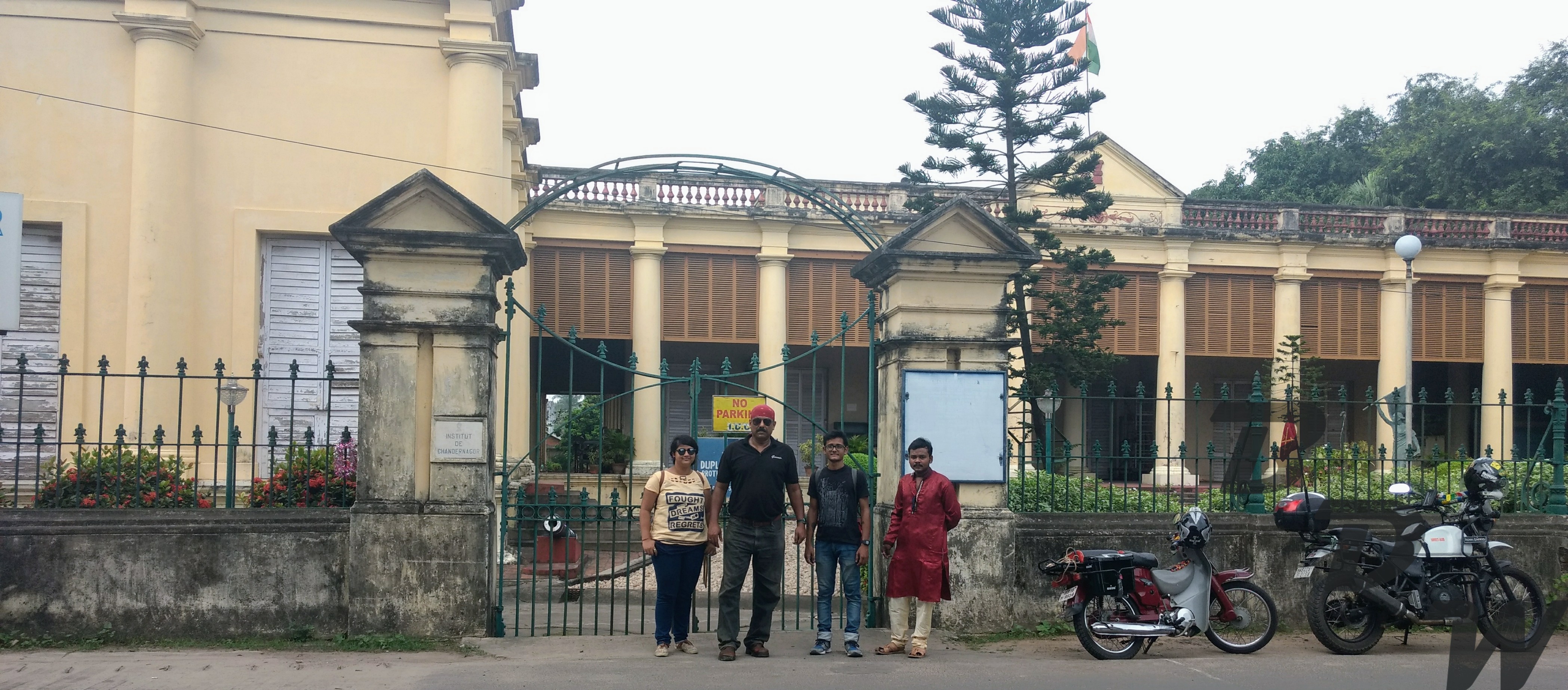
At #CHINSURAH CLOCK TOWER (Chuchro)
Chinsurah, Hooghly was a Dutch Colony during the period 1635-1824. Dutch East India Company made significant progress in Asian Spice Trade in 17th and 18th Century. A business settlement was established in Chinsurah in 1635 to trade in opium, salt, muslin and spices. Later they built a fort called Fort Gustavious, a church and several other buildings in the town. Trade thrived in Dutch Bengal in early 18th century to such an extent that Chinsurah-Hooghly was allowed to trade directly with the Dutch Republic (instead of first delivering the goods to Batavia, present day Jakarta, Indonesia). Chinsurah flourished under Dutch rule. But eventually the Dutch control over Bengal made the Anglo-French rivalry inevitable. It was an imposing threat to the emerging British powers. The victory of British in the Battle of Plassey, 1757 reduced the status of the Dutch Administration to a mere minor power. Finally, through the Anglo-Dutch Treaty of 1824, Dutch surrendered their establishment on Indian subcontinent to the British.
The Chinsurah Clock Tower is a small clock tower constructed out of steel with four clock faces indicating time towards the four cardinal directions. There is a bell on top and four lamp shades in the four corners which light up at night.
This clock tower was installed in 1914 to commemorate the rule of Albert Edward (King Edward VII) who was the eldest son of Queen Victoria and Albert of Saxe-Coburg-Gotha. King Edward VII ruled Britain and its dominions from 22 January 1901 – 6 May 1910. EDWARDVS VII DEI GRA BRITT OMN REX is the Latin abbreviation for Edward the Seventh, by the Grace of God, King of All Britain Defender of the Faith. These are the inscription which people often do not notice when the cross the small clock tower in Chinsurah. Most just simply call it the “Ghorir More” (Clock Crossing) due to its presence at a four-point crossing.
In 1973, a statue of Bhupati Majumdar (1890-1973), a freedom fighter and a close aide of Bagha Jatin was installed right in front of the clock tower by then Chief Minister of West Bengal, Siddhartha Shankar Ray.
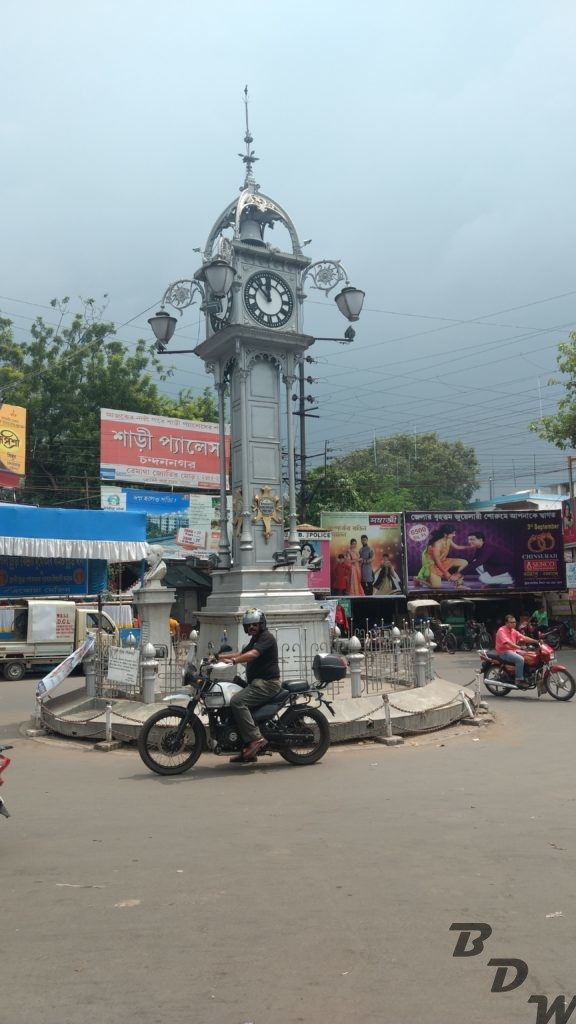
At the #DUTCH_CEMETRY CHINSURAH.
The Dutch Cemetery was not the first one in this particular location, the original one was raised and was later shifted to this current location. The exact date of this shift cannot be concretely proven as no detailed report exists as of now. The current Dutch cemetery is a heritage site and is under the supervision of ASI (Archaeological Survey of India). It is to be noted that this cemetery is no longer in use and the local Christian population uses a plot of land on the right-hand side of this cemetery which is an active burial site.
Since this is under the ASI thus its maintenance is being regularly done, this can be seen by the clear walkways around the cemetery. Though the tombs are more than centuries old still their grandeur can be well felt. It also to be noted that this was a Dutch cemetery but many English families were also buried here. This can be well understood if one studies the name on the graves and tombs.
The oldest record is that of Cornelis de Jonge (Jong) who died in the year 1743and the last recorded burial was held in 1887 that of Emma Draper. The last Dutch Governor, Daniel Overbeek (1840 CE) also lies here.
Joined here by another Rider #brother Amit Dutta. Now it’s 5 of us RIDING …

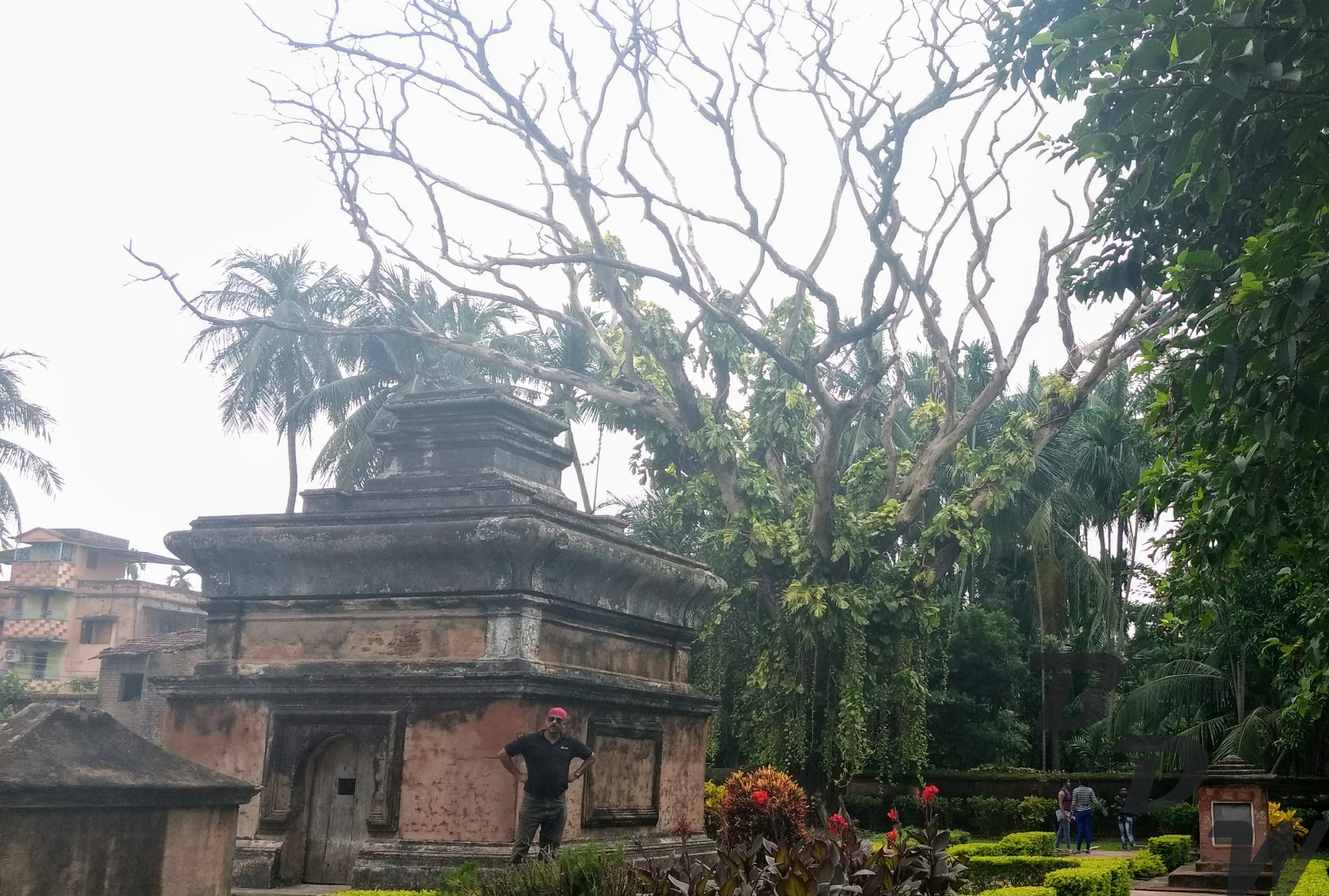

At #HOOGHLY_JAIL
The great revolutionary poet of Bengal, Kazi Nazrul Islam was at Alipore Central Jail as a Political Prisner with special arrangements. But at this time the Non-cooperation movement was called off and the Govt. revised their policy for the treatment of political prisoners. Only a few political prisoners were transferred to Berhampore Jail to give privileged treatment and the rest were transferred to Hooghly jail as ordinary prisoners. these prisoners were asked to get down at Naihati station and were given a “jangiya” and “a half shirt” to put on as ordinary prisoners. Nazrul was among them.He came to Hooghly Jail wearing the new dress on 14th April 1923 and stayed there upto 17th of June 1923.
At that time an Englishman Mr. Aston was the Jail Superintendant. his treatment with the prisoners was oppressive. The prisoners too did not have any other alternative to disobey the rules. Nazrul composed a parody remembering a poem of Rabindranath and used to sing it before the superintendant. “Tomari jail-e palicho thele , tumi danya dhanya he”. The excesses of treatment of the Super caused the prisoners including Nazrul to go on hunger strike as a protest to the illtreatment of the Super.
This created great concern amongst all, low and high, rich and poor, literates and illiterates, Hindus and Muslims because of Nazrul who already showed talents next to Rabindranath in Bengali literature.
The picture of Hooghly Jail has been vividly described by Md. Mahinuddin . On June 17, 1923 Kazi Nazrul was transferred to Berhampore Central Jail with proper dignity.
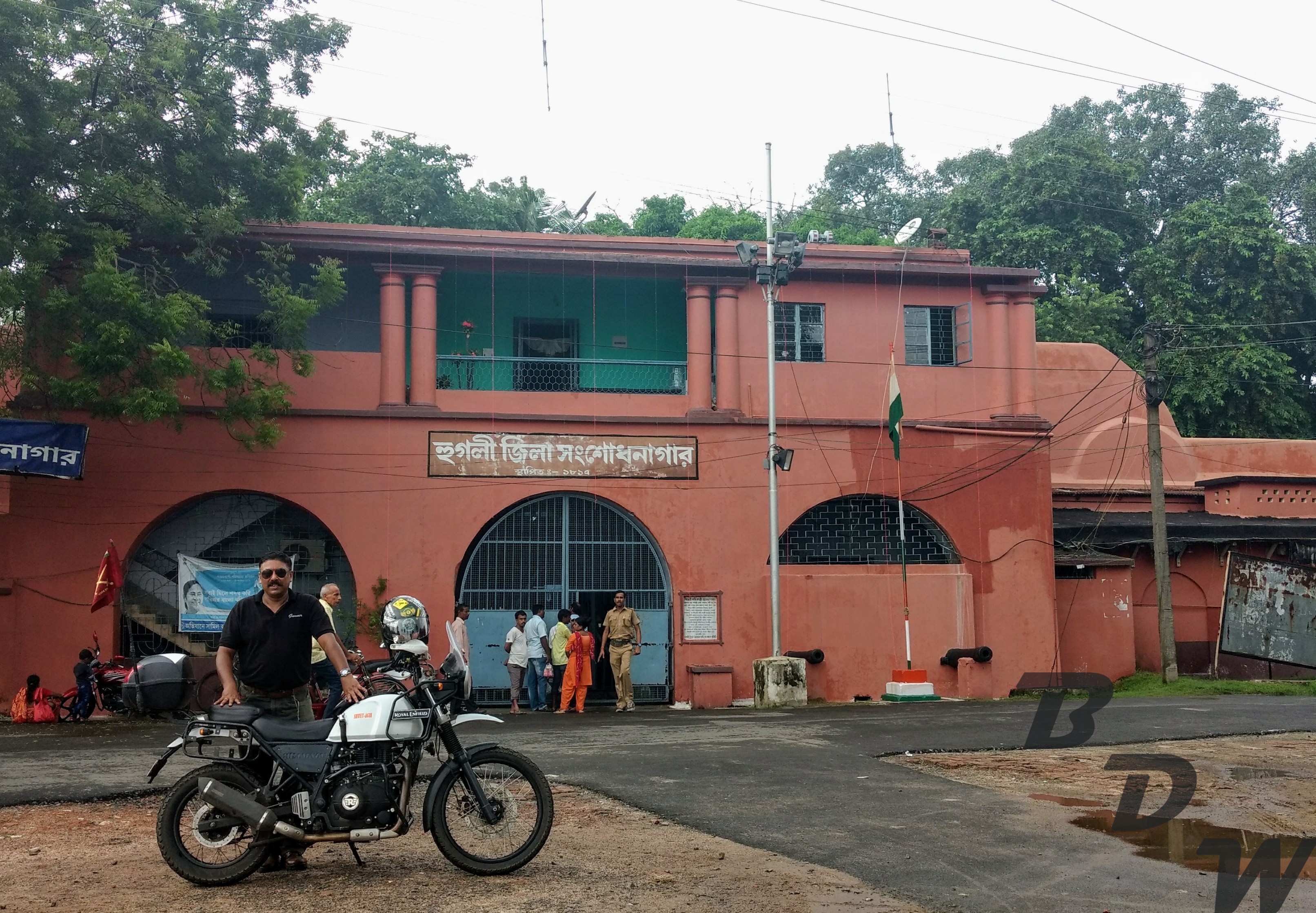
At the #HOOGLY_IMAMBARA.
The Hoogly Imambara was in its original form built by a salt merchant named Muhammad Aga Motahar in 1717, which was just a one storied structure, where he stayed with his family and dedicated this building in the name of “Allah” the almighty and named it as #Nazargah_Hossein. Extensions to this building were done by his son in law, Mirza Saleh-ud-din. This new extension was called the #Tazia_Khana. This, however, is not the Imambara that we see today, the current one was built on the ruins of the earlier by Hazi Muhammad Mohsin. He was related to Muhammad Aga Motahar through his daughter Mannoojan Khanam. The construction was started in the year 1841 and completed in 1861. The cost incurred for the construction was a mammoth Rs. 2,17,413.
The main tower with 152 steps to climb from each of the two sides, showcases a large clock; this was made in England by and procured at a sum of Rs. 11,721 from Black and Murray Company of London and Calcutta. This clock has two faces with time written in Arabic numerical, one can be seen from the main road and the other from inside the courtyard.
In front of the courtyard is the main prayer hall called Zari Dalan. The hall has beautiful black and white marble flooring and the windows and sky light have equally beautiful coloured glass. Beautifull Islamic calligraphy with verses from Quran adorn the walls. The lane left of the Zari Dalan takes you to the back of the complex and right in front of the Hoogly River. Here you can see another landmark the Sun Dial. From there, on looking back towards the Zari Dalan building one can see the deed of Hajee Mohummud Mohsin engraved on the wall in English and Eastern Arabic.
Was very very lucky to witness the Sacred Ritual of #Matam. The Arabic term matam refers in general to an act or gesture of mourning; in Shia Islam the term designates acts of lamentation for the martyrs of Karbala. Male and female participants congregate in public for ceremonial chest beating (matam) as a display of their devotion to Imam Husayn and in remembrance of his suffering. In some Shi’a societies, such as those in Bahrain, Pakistan, India, Afghanistan and Iraq, male or participants may incorporate knives or razors swung upon chains into their matam. There are two basic forms of matam:
- matam using one’s hands only, that is, sineh-zani or breast-beating
- matam with implements like chains, knives, swords and blades, that is, zanjeer-zani, qama-zani, etc.
Matam in South Asia is the most significant and sensitive Shia identity marker.
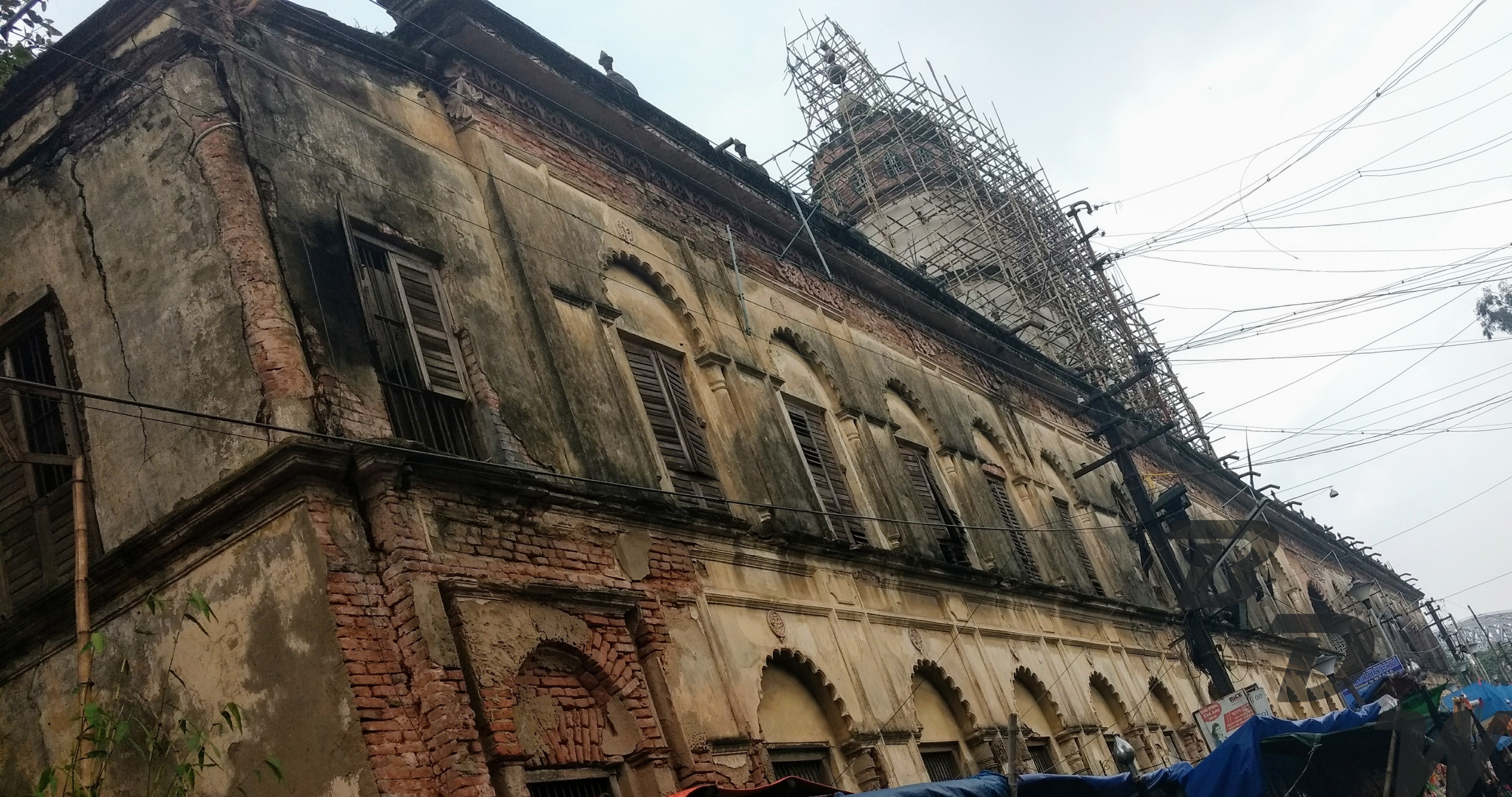

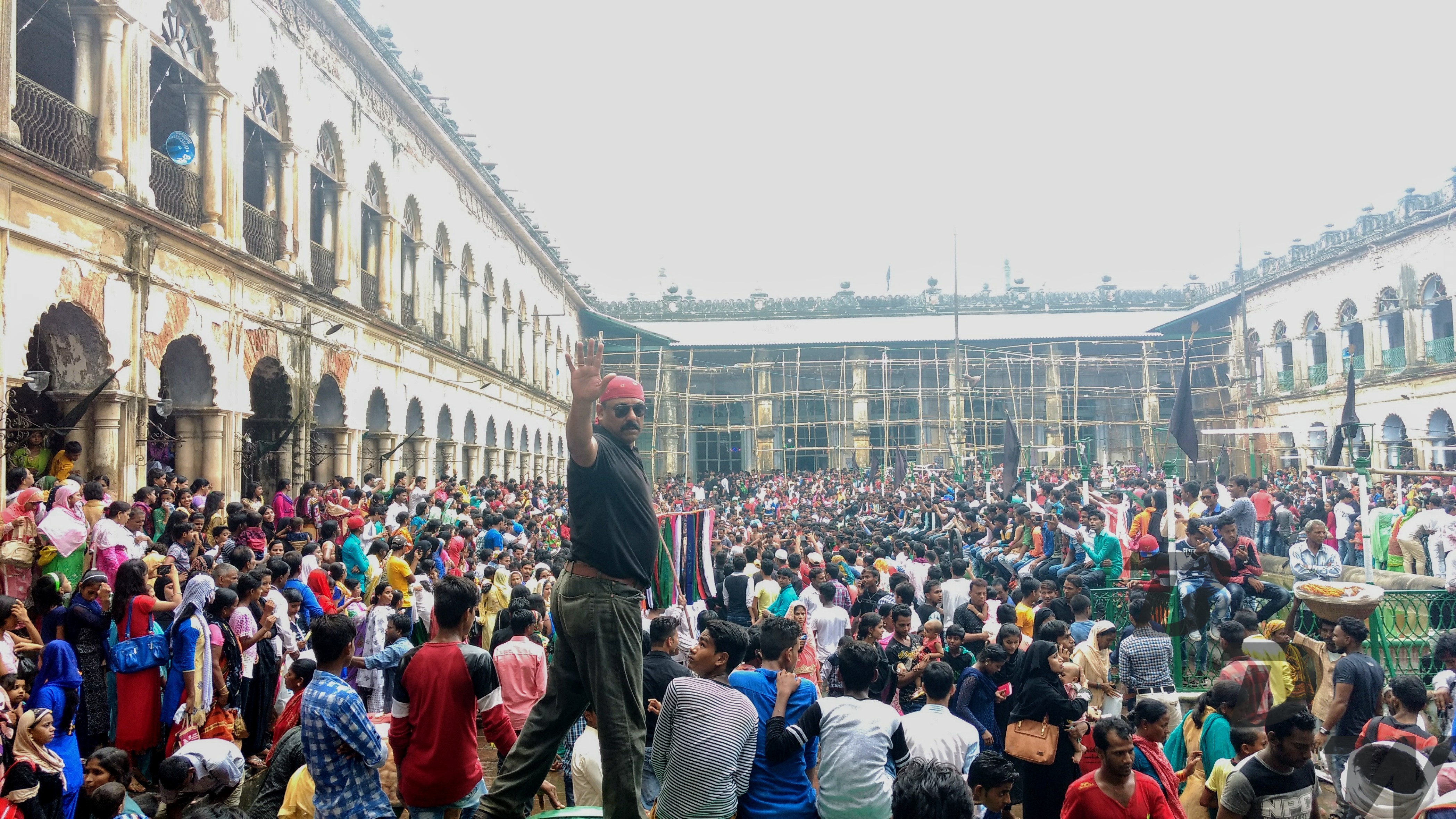
At the #BANDEL_CHURCH (The Basilica of Holy Rosary)
When India was fast becoming a hub for European trade, the British, Dutch and the French were followed by the Portugeese in establishing a flourishing trading port on the banks of Hooghly in the year 1537. Monks from Goa of the Augustinians order of the Roman Catholic denomination came and built a small monastery along with a church in the year 1599. The church was known by the name Church of the Holy Rosary.
In 1632, the armies of the Mughal emperor Shah Jahan under Qasim Khan Juvayni Nawab attacked the Hooghly port and killed five of the Augustinians monks, however one survived. His name was Father Joan Da Cruz. During attack, a believer named Tiago tried to swim across the Hooghly River with the statue of Our Lady of Happy Voyage to take it to safety, however drowned and in the process the statue sank into the Hooghly River and was lost. Father Joan Da Cruz along with other followers was captured and taken to Agra to the courts of Shah Jahan where they were sentenced to death by trampling under the feet of ferocious elephants. However, the elephant instead of killing lifted Father Joan Da Cruz on its back bits its trunk and slowly proceeded towards the emperor and bent to ask for forgiveness. Seeing this miracle the emperor Shah Jahan freed Father Joan Da Cruz and gave him money to reconstruct the church along with 777 bighas (311 Acres) of land. Father Joan Da Cruz after his return rebuilt the church however, the statue of Our Lady of Happy Voyage was still missing. It is rumored that Father Joan Da Cruz heard the voice of Tiago the servant of God telling him that “Our Lady” was coming back and that it was she who had saved the believers. Next morning Father Joan Da Cruz found the statue of Our Lady of Happy Voyage in front of the doorstep of the church. The local fisherman had found it. This was the second miracle to happen in this church.
The return of the statue signified a big celebration to give thanks to the miracles that the statue had brought to this church. During the closing of the celebration, people saw a Portuguese ship approaching from which, the captain disembarked near the church and joined the closing celebrations. Once it was over the captain of the ship donated the flag mast of his ship and installed it in front of the church. This was done as the captain had prayed during a dangerous storm which the ship had faced at the Bay of Bengal. The word “Bandel” from which we get “Bandel Church” actually came from the word “Mastro de Bandeira” In Portuguese this word means the Flag Post. The word “Bandeira” slowly got transformed in the word “Bandel” and it stuck. In 1988 during the visit of Pope John Paul II visit to Calcutta, he declared the church as a basilica. The church went through a major facelift in the 1990’s when the entire church was covered with marble and granite. The mast which was installed and remain erected in front of the church for centuries till a storm in the year 2010. A large tree got uprooted and fell on the mast causing it to crack and fall down. A major restoration work was taken and now again the visitors can see the mast in a glass enclosure. Every November the church is thronged with pilgrims during the Novena of Notre Dame de Bon Voyage.
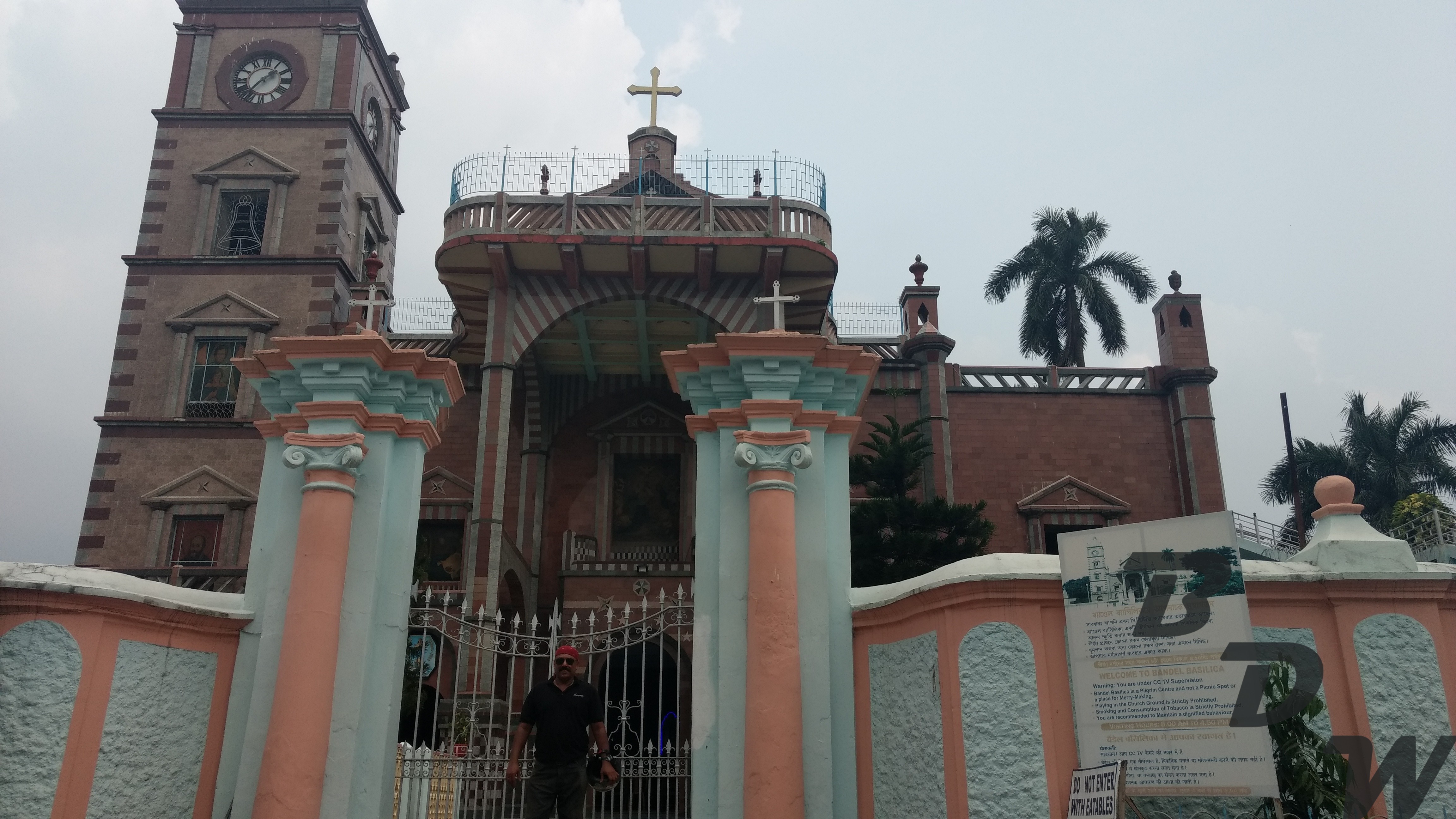
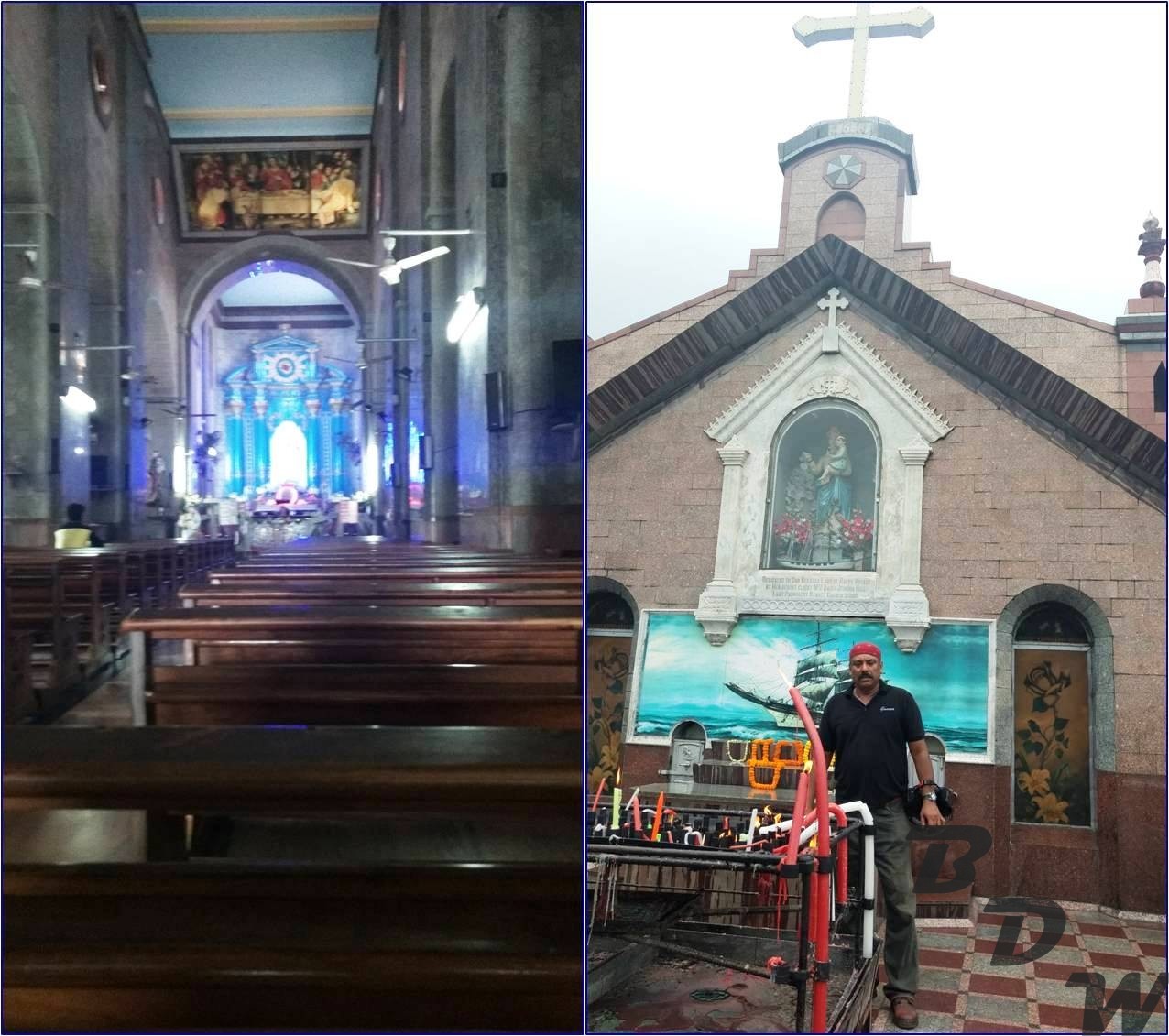
At the #HANGESHWARI_TEMPLE , Bansberia (Also called Hangsheshwari temple)
In 1673, Zamindar Rameshwar Ray left Patuli and settled in Bansberia or Banskabati as it was known earlier in Hooghly. Bansberia is located besides our holy river Ganga, and in between Tribeni and Bandel. Zamindar Rameshwar Ray was gifted this villageof around 400 Bigha of Land and its Zamindari by the Mughal emperor Aurangzebwho also gifted him the prestigious title of King. From this time onward many of his kith and kin settled in Bansberia.
The Hanseswari temple was built in the beginning of the 19th century. The main deity is the blue neem-wood idol of the four-armed goddess Hanseswari, a manifestation of Goddess Kali. The temple is 21 meter high and has 13 towers. The peak of each tower is shaped as a lotus flower. Built according to Tantric principles,
this five-storey shrine follows the structure of a human body – Ira, Pingala, Bajraksha, Sushumna and Chitrini. It was started by Raja Nrishinghadeb Roy and later completed by his wife Rani Shankari.According to a legend King Nrisingha Dev Rai, while staying in Varanasi during the year 1792 to 1798 learnt deeply “Kundalini” and “Six cyclic centers (Six Chakras)” in the human system. Cancelling his plan to visit Britain he endeavored to build a
temple at Bansberia based on “Kundalini and yogic concepts”. At that time rupees one lakh or more was spent in procuring marbles from a hilly area called Chunar
situated near Benaras. Skilled artisans were also brought from this place to build up the temple. Unfortunately the King left for his heavenly abode in 1802 in the midway of construction of the temple. His queen Rani Shankari took the initiative and the temple was completed in the year 1814.
The temple is now taken over as a heritage site by the Archaeological Survey of India.
The temple complex has another temple— Ananta Basudeba temple besides the main temple. There is also the Swanbhaba Kali temple nearby built by Raja Nrisinhadeb Roy Mahasay in 1788. This temple too holds a very special position
as a terracotta temple with exquisite terracotta works on it.
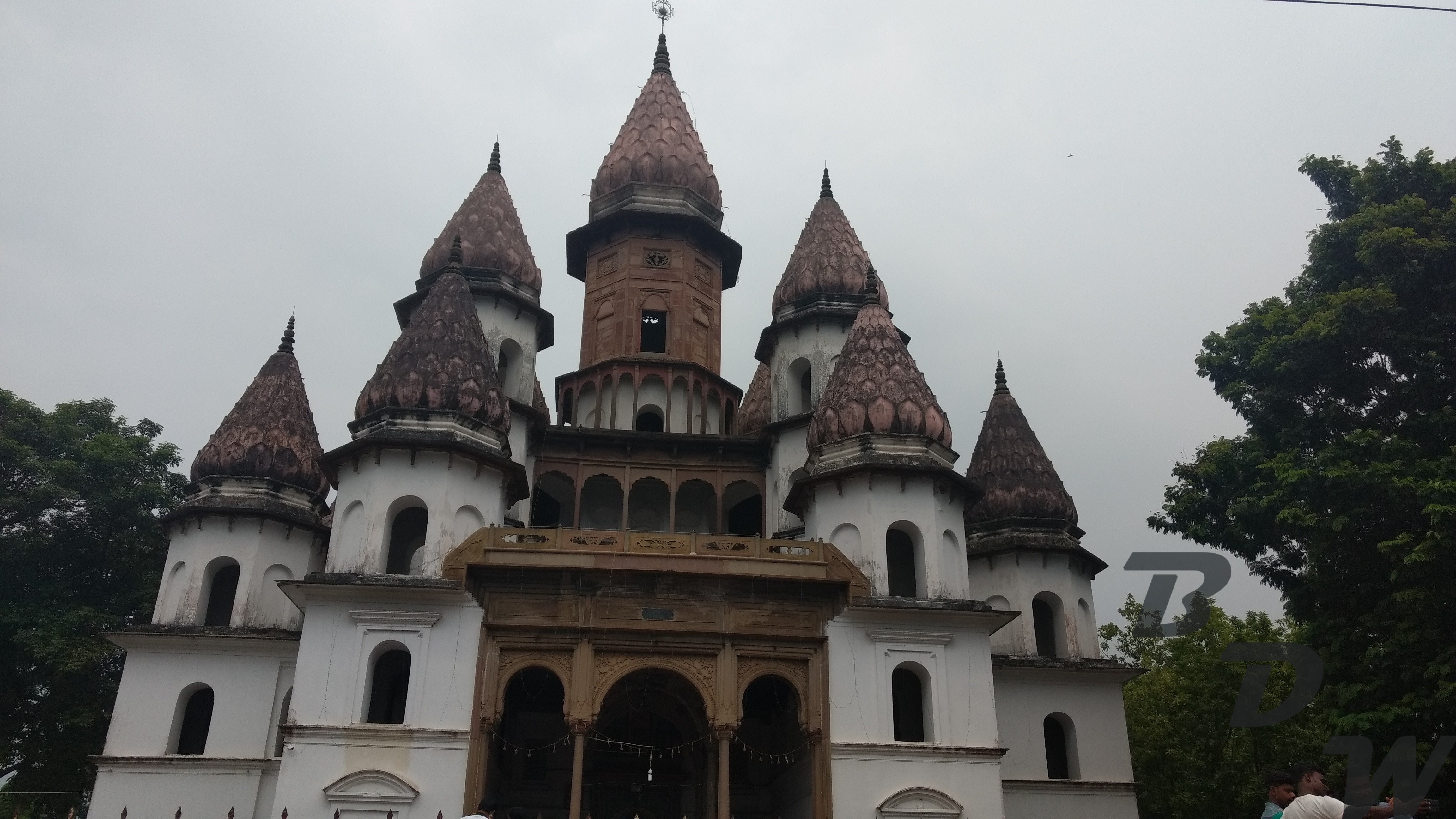

At the Heritage Durga Puja at the #Nandibari of Jamgram, Pandua. A full series on Nandi’s is also on the card .,.
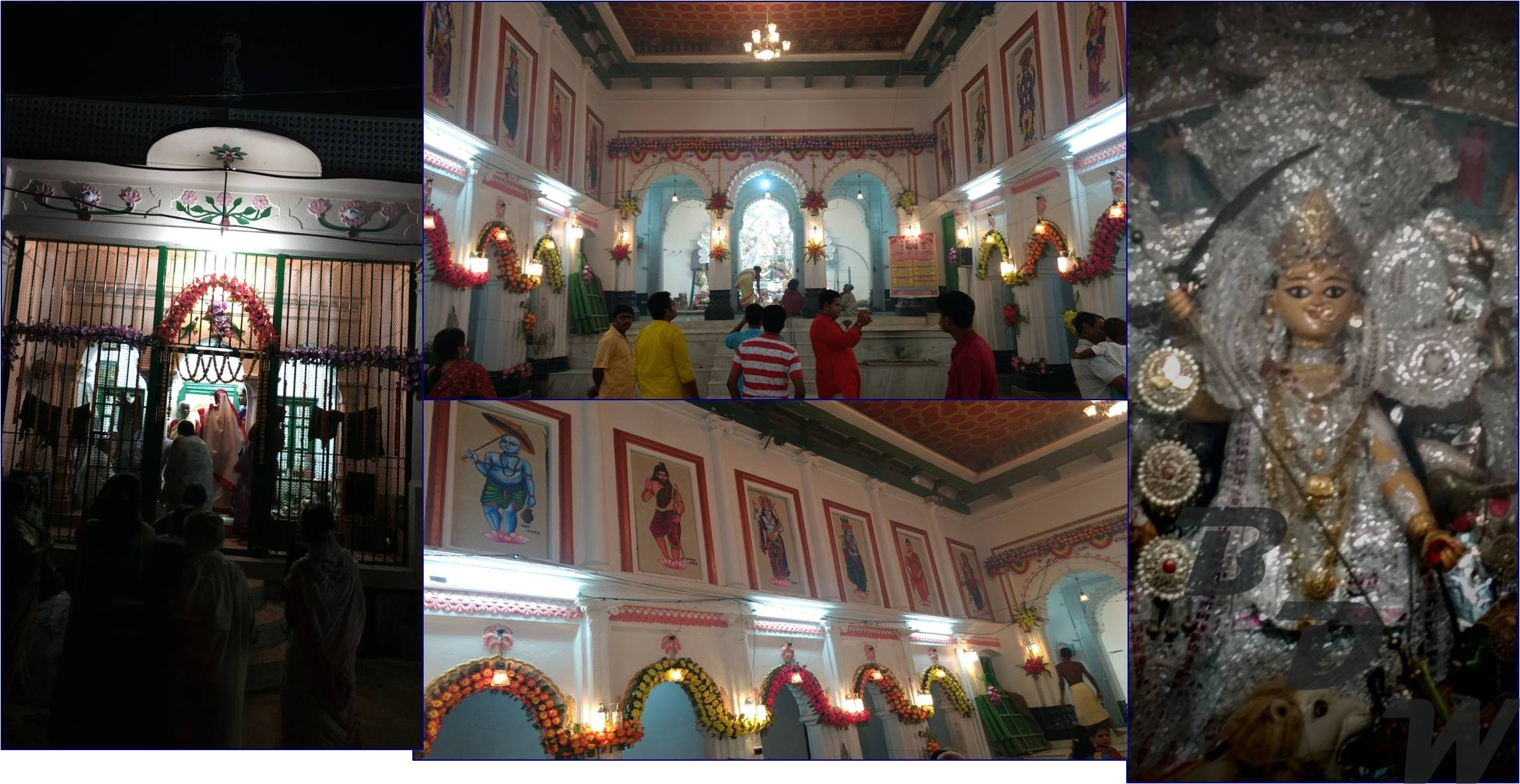

Reached home safely, thoroughly drenched, tired and extremely satisfied. Now I can claim, I have seen quite a bit of Bardhaman, Birbhum and now Hoogly.
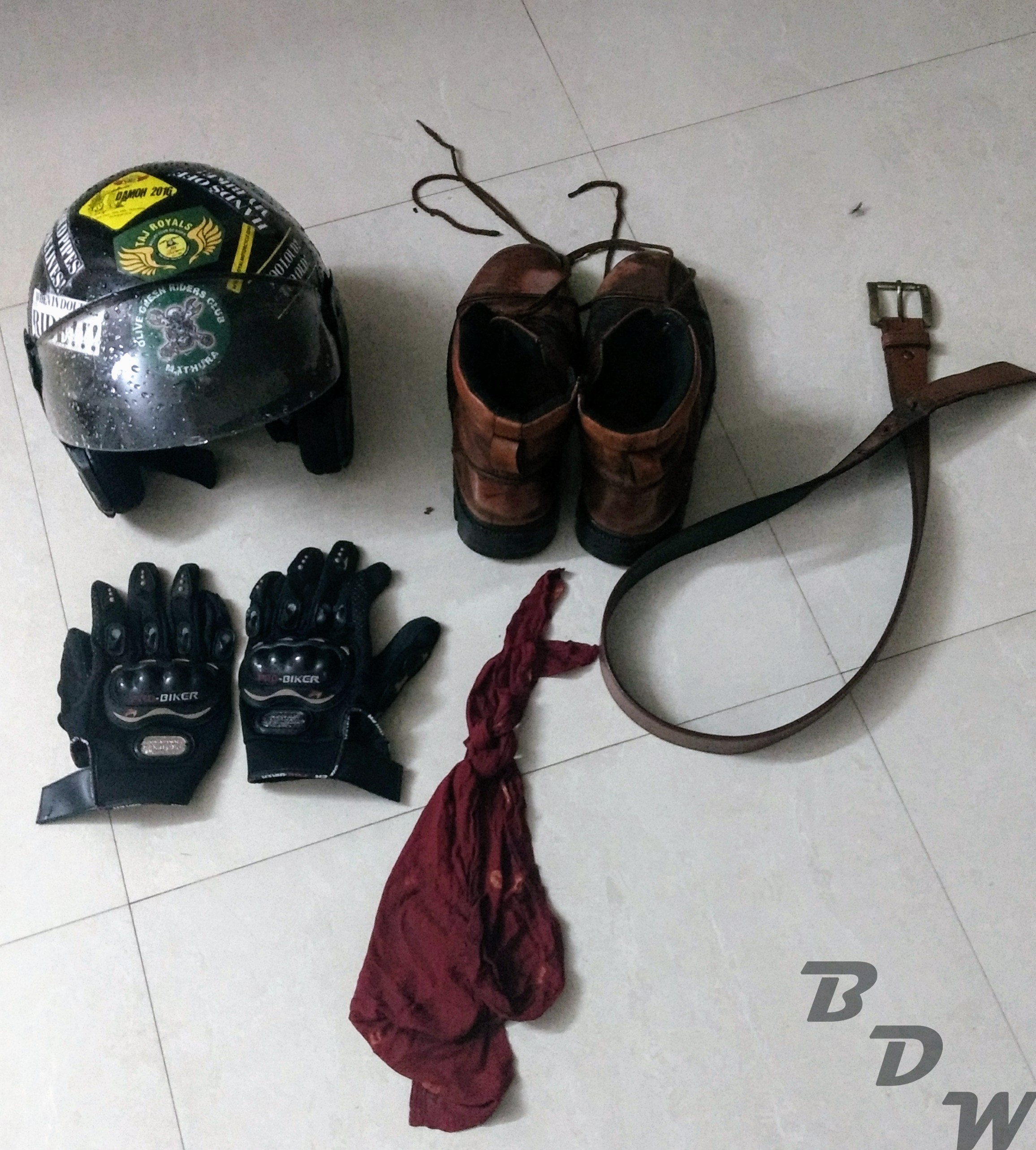
#Thoughts_of_the_ride.
1. This extensive ride covering so many places wouldn’t have been possible without the help and support of Sanghamitra Mitra, Arijit Seal, Supratim Dhali, Amit Dutta.
(a) Sanghamitra has started calling me #Dada_kaku. Such a fine, enthusiastic and full of life #bikerni without whose initiative it wouldn’t have been possible to see the houses and treasures of #Anthony_Firingi, #Mondol, #Ray and #Nandi. Proud of her upbringing, culture and humility. Will wish my daughter to grow up like you.
(b) Seal is #Navy_seal. He can smile and do with his M80 what I do with Himalayan. An avid Traveller, he teaches me humility and the motto that – Journey matters, not means … Bike, cycle, bus, foot all are equally good.
(c) What Maradona is to football, #Dhali is to biking. In a 2 feet rd with 800 people, Dhali can still do 80 kmph. Wow !!!
(d) Amit is a #Born_Marshall. The way he took us out from the labyrinth of crowded streets, reflect his control of the Motorcycle and roads. Helmets off.
- The youngsters are all so wow !!! Me and all the 40+ Bengali males are negative, nosy, inquisitive, dead in spirit. Never ever grow up like them young people. Live young, live free.
- The slime seal for tube is effective. My rear tyre of #Shwet_Agni got a huge nail through, pulled it out, pumped some air and was good as if nothing happened. Thank you Shounak Bose, it was all your idea, effort and execution.
- The families of Mitra-Mustafi, Roy, Mondol, Nandi, Mojumdar, Kundu … Are a treasure trove of history. Books can be written, and still all won’t be covered.
- Durga-Puja and Ramjaan can happen together very easily and very well. Just don’t listen to the politicians. Youth of both religions are the only hope.
And finally, signing off for the day and this series with the message … RIDE HARD, and say BUDDHA BABA KI JAI ….


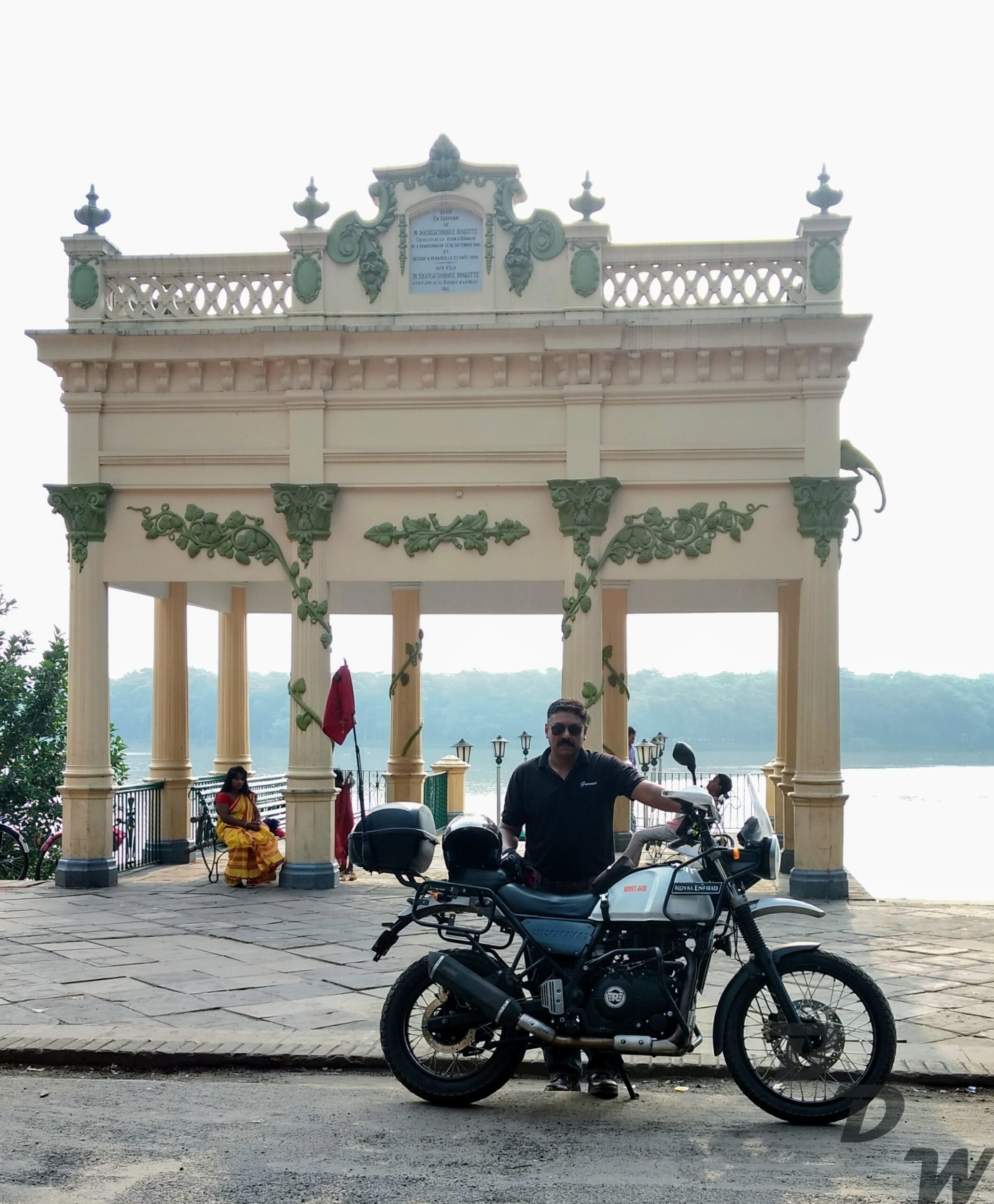


No Comment! Be the first one.